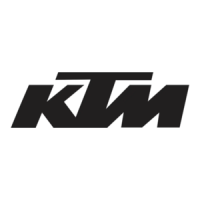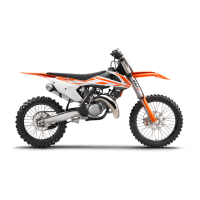What to do if my KTM 150 XC-W 2024 Motorcycle engine cannot be cranked?
- GGregory BondAug 6, 2025
If your KTM Motorcycle engine won't crank, possible causes include an operating error, a discharged 12-V battery (in this case you should charge the 12-V battery and check the charging voltage, closed current, and stator winding of the alternator), a blown main fuse (you should change the main fuse), a faulty starter relay (you should check the starter relay), or a faulty starter motor (you should check the starter motor).



